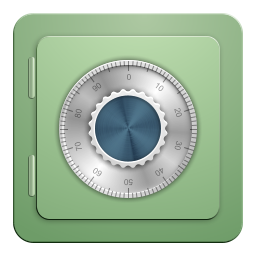ext2, or second extended file system, is a file system for the Linux kernel. It was initially designed by French software developer Rémy Card as a replacement for the extended file system (ext). Having been designed according to the same principles as the Berkeley Fast File System from BSD, it was the first commercial-grade filesystem for Linux.
CrossCrypt is an open-source on-the-fly encryption program for the Microsoft Windows XP/2000 operating systems. CrossCrypt allows a user to make virtual drives which encrypt any files stored on them, making the encryption process seamless to the user.

TrueCrypt is a discontinued source-available freeware utility used for on-the-fly encryption (OTFE). It can create a virtual encrypted disk within a file, encrypt a partition, or encrypt the whole storage device.
In cryptography and steganography, plausibly deniable encryption describes encryption techniques where the existence of an encrypted file or message is deniable in the sense that an adversary cannot prove that the plaintext data exists.
Disk encryption software is a computer security software that protects the confidentiality of data stored on computer media by using disk encryption.
In Linux, Logical Volume Manager (LVM) is a device mapper framework that provides logical volume management for the Linux kernel. Most modern Linux distributions are LVM-aware to the point of being able to have their root file systems on a logical volume.
The device mapper is a framework provided by the Linux kernel for mapping physical block devices onto higher-level virtual block devices. It forms the foundation of the logical volume manager (LVM), software RAIDs and dm-crypt disk encryption, and offers additional features such as file system snapshots.
In Linux systems, initrd is a scheme for loading a temporary root file system into memory, to be used as part of the Linux startup process. initrd and initramfs refer to two different methods of achieving this. Both are commonly used to make preparations before the real root file system can be mounted.
Disk encryption is a special case of data at rest protection when the storage medium is a sector-addressable device. This article presents cryptographic aspects of the problem. For an overview, see disk encryption. For discussion of different software packages and hardware devices devoted to this problem, see disk encryption software and disk encryption hardware.
EncFS is a Free (LGPL) FUSE-based cryptographic filesystem. It transparently encrypts files, using an arbitrary directory as storage for the encrypted files.

FreeOTFE is a discontinued open source computer program for on-the-fly disk encryption (OTFE). On Microsoft Windows, and Windows Mobile, it can create a virtual drive within a file or partition, to which anything written is automatically encrypted before being stored on a computer's hard or USB drive. It is similar in function to other disk encryption programs including TrueCrypt and Microsoft's BitLocker.
Cryptoloop is a Linux kernel's disk encryption module that relies on the Crypto API, which is a cryptography framework introduced in version 2.5.45 of the Linux kernel mainline. Cryptoloop was first introduced in the 2.5.x kernel series; its functionality was later incorporated into the device mapper, a generic framework used to map one block device onto another.
The Linux Unified Key Setup (LUKS) is a disk encryption specification created by Clemens Fruhwirth in 2004 and originally intended for Linux.
Disk encryption is a technology which protects information by converting it into code that cannot be deciphered easily by unauthorized people or processes. Disk encryption uses disk encryption software or hardware to encrypt every bit of data that goes on a disk or disk volume. It is used to prevent unauthorized access to data storage.

BestCrypt, developed by Jetico, is a commercial disk encryption app available for Windows, Linux, macOS and Android.
This is a technical feature comparison of different disk encryption software.
Btrfs is a computer storage format that combines a file system based on the copy-on-write (COW) principle with a logical volume manager, developed together. It was created by Chris Mason in 2007 for use in Linux, and since November 2013, the file system's on-disk format has been declared stable in the Linux kernel.
There are various implementations of the Advanced Encryption Standard, also known as Rijndael.
eCryptfs is a package of disk encryption software for Linux. Its implementation is a POSIX-compliant filesystem-level encryption layer, aiming to offer functionality similar to that of GnuPG at the operating system level, and has been part of the Linux kernel since version 2.6.19.


